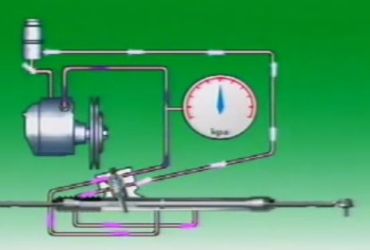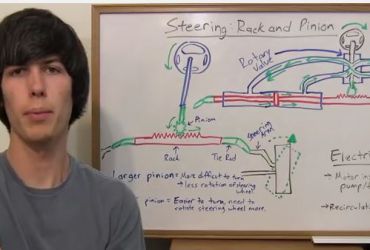Power Steering

Your power steering system is made up of three major hydraulic components: the pump, the rack which includes the steering gear with hydraulic cylinders, and the hoses which are a high pressure hose and a low pressure return line. Your engine drives the pump which circulates the fluid to an assist cylinder that makes your steering wheel easier to turn.
When your power steering fluid oxidizes it thickens and darkens in color and the thicker the fluid gets the more sluggish the steering action becomes. Eventually the fluid becomes so thick that it travels slowly through the rack and pump and gives erratic and stiff steering known as a “morning sickness” complaint. Eventually this will strain the pump and damage the system leading to premature parts failure.
The majority of power steering fluid that is sold in the US market is what is known as “top off” fluid. These are cheaper aftermarket fluids that are designed to add to the factory fill and will perform adequately as long as a low percentage is used in the system.
When a power steering service or repair is done only OE grade, superior blend, or full synthetic fluids should be used to refill the system—cheaper top-off fluids will shorten system life and produce erratic steering and poor performance.
We recommend a service interval of 3 years/36k miles or when the fluid turns dark or black for a complete fluid exchange. Our fluids and supplements exceed all of the factory performance requirements and will insure peak performance of your power steering system.



